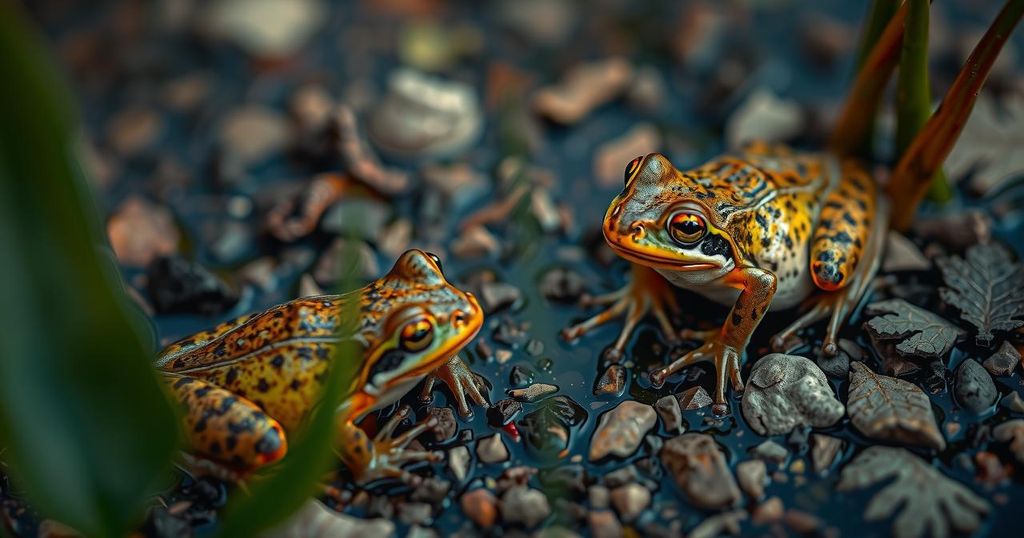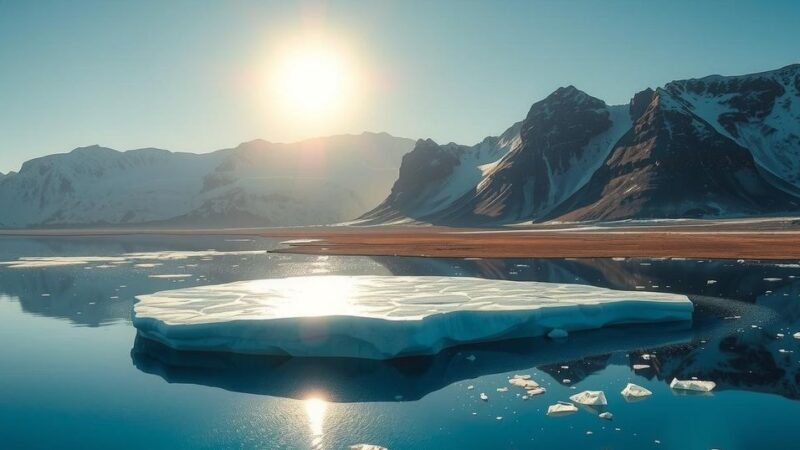Frogs and toads may face severe habitat loss of up to 33.6 percent by 2100 due to climate change, particularly worsening drought conditions. A study highlights that nearly 41 percent of amphibian species are at risk of extinction, emphasizing the urgent need for conservation strategies.
Recent research published in the journal Nature indicates that frogs and toads may face significant threats from climate change, particularly with a projected loss of up to 33.6 percent of their habitats by the years 2080 to 2100. This study underscores the potential impact of drought conditions and temperature increases on anuran populations worldwide. The findings suggest that under scenarios of both intermediate and high greenhouse gas emissions—specifically, a warming of 2 degrees Celsius and 4 degrees Celsius above pre-industrial levels, respectively—frogs and toads will likely undergo severe water stress. Between 15.4 percent to 36.1 percent of their habitats may become increasingly arid due to these climatic changes. The 2023 Second Global Amphibian Assessment reports that nearly 41 percent of amphibian species are at risk of extinction, making this group the most threatened class of vertebrates. According to the study’s authors, the expected arid conditions will likely lead to doubled water loss rates among amphibians, which will adversely affect their movement, breeding, and overall health, rendering them more susceptible to diseases. This research further maps the intersection of drought and warming, predicting that conditions will exacerbate water stress, ultimately compromising frogs’ survival and physiological functions. Geographically, regions at risk include parts of the Americas, southern Africa, Europe, and southern Australia, with particularly severe threats anticipated in the Amazon and Atlantic forests. The study also examined adaptive strategies in different species of frogs through biophysical simulations, revealing that increased temperatures and drought conditions significantly diminish their activity levels. Scientists found that amphibians employ evaporative water loss (EWL) to regulate their body temperatures in extreme heat, but such adaptations lead to dehydration, increased energy consumption, and a detrimental impact on their dispersal capabilities and reproductive success. As noted in the research, stream-dwelling and semi-aquatic frogs are expected to be at a heightened risk of desiccation stress compared to their arboreal counterparts, highlighting a significant disparity in adaptation strategies across various species. Ultimately, while certain frogs may exhibit resilience through phenological plasticity, their capacity to acclimate will be critical for their survival amidst escalating environmental challenges.
The growing concern over climate change has spotlighted its detrimental effects on biodiversity, especially within vulnerable species like amphibians. Frogs and toads, representative of the anuran group, play essential ecological roles. Their health and survival serve as indicators of ecosystem integrity, making them crucial for environmental monitoring. As amphibians face mounting pressures from habitat loss, pollution, and climate-induced changes, the alarming statistics from the 2023 Second Global Amphibian Assessment suggest a pressing need for conservation efforts. This research is particularly pertinent, considering the dual challenges of increasing temperatures and prolonged drought conditions that threaten specific amphibian habitats globally.
In conclusion, the research highlights the grave challenges faced by frog and toad populations due to climate change, particularly due to projected habitat loss and increased drought conditions. With nearly 41 percent of amphibian species at risk of extinction, immediate and concerted conservation efforts are essential to mitigate these threats. Furthermore, the findings emphasize the need to understand and support the physiological adaptations of anurans to ensure their survival in an increasingly arid future.
Original Source: www.downtoearth.org.in






